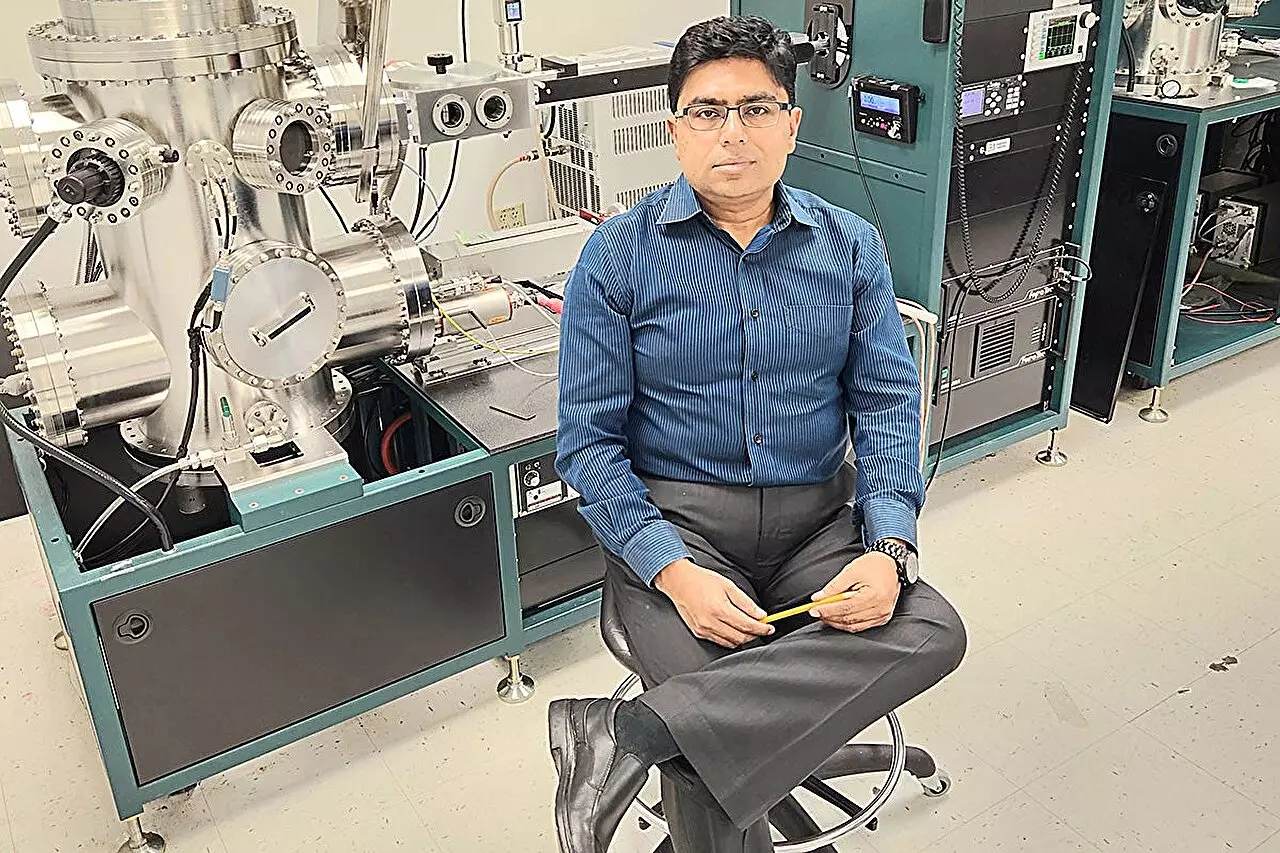In a groundbreaking development, Debashis Chanda, a professor at the University of Central Florida’s NanoScience Technology Center, has successfully created a new technique to detect photons. These elementary particles play a vital role in carrying cellular communication and span from visible light to radio frequencies. Chanda’s innovative method of modulating the frequency of an oscillating circuit has opened up new possibilities for more accurate and efficient technologies across various fields, including medical imaging, communication systems, and scientific research. Furthermore, this advancement may even strengthen security measures in the future.
Traditionally, photon detection has relied on the modulation of voltage or current amplitude. However, Chanda’s groundbreaking technique utilizes a special phase-change material (PCM) that alters its form when exposed to light. This triggers an electrical rhythm that remains constant, creating a stable electrical circuit oscillation. When a photon strikes the material, it alters the speed of the rhythm or shifts the oscillation frequency. The extent of this rhythm change is determined by the intensity of the light, much like how a person’s voice affects the sound on a radio.
Long Wave Infrared (LWIR) detection plays a vital role in astronomy, climate science, materials analysis, and security. However, it has long been a challenge to achieve LWIR detection at room temperature due to the low energy of photons. Currently available LWIR detectors fall into two categories: cooled and uncooled detectors. While cooled detectors offer excellent detectivity, they require cryogenic cooling, making them expensive and impractical. On the other hand, uncooled detectors can operate at room temperature but suffer from low detectivity and slow response due to higher thermal noise.
The introduction of Chanda’s technique offers a breakthrough in LWIR detection. Instead of the conventional amplitude modulation (AM) method that alters voltage or current, the FM-based approach modulates the frequency of an oscillating circuit based on incidents of photons. This method inherently offers robustness to noises of an AM nature. The results demonstrate outstanding room temperature noise equivalent power, response time, and detectivity, presenting a promising solution for the future of LWIR detection.
This novel FM-based detector holds immense potential for creating low-cost, high-efficiency uncooled infrared detectors and imaging systems. It opens up a wide range of applications, including remote sensing, thermal imaging, and medical diagnostics. With the prospect of further enhancement through industry-scale packaging, Chanda believes that this concept will revolutionize photon detection across different spectral ranges. By integrating the FM-based detector with electronic readout circuitry, the technology becomes easily adaptable and eliminates the need for complex hybridization.
The advancements made by Debashis Chanda in photon detection have paved the way for a paradigm shift in technology. The ability to modulate the frequency of an oscillating circuit based on incidents of photons presents a breakthrough in achieving accurate and efficient detection. This development has significant implications for various fields, from medical imaging to scientific research, and offers the potential for improved security measures. As further research and development are conducted, the FM-based detection concept holds the promise of overcoming existing limitations and driving progress in a wide range of applications.


Leave a Reply